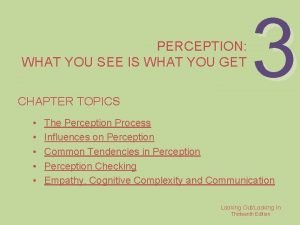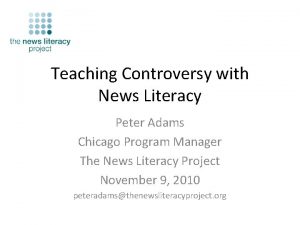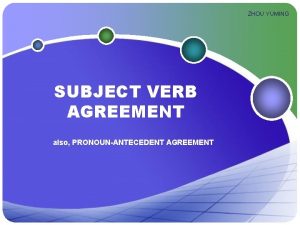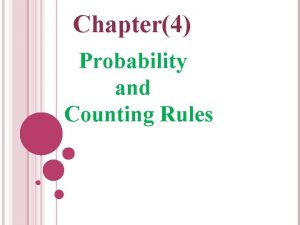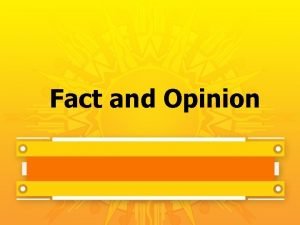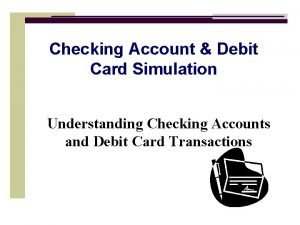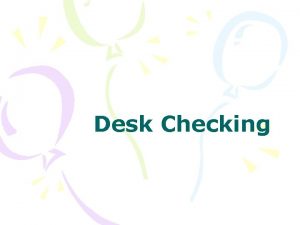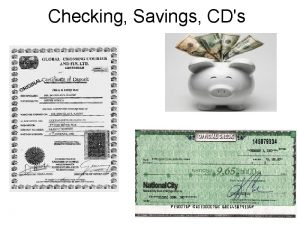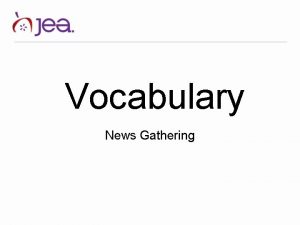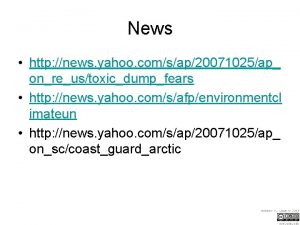7 Steps to Fact Checking News Literacy Fact














- Slides: 14

7 Steps to Fact Checking News Literacy

Fact checking is a process of accountability ● It is not mere “copyediting” ● It is not simplistic ● It is used for any and all purposes, regardless of the subjects involved or angle of the story

7 steps from the pros 1. Choose the right fact 2. Prepare yourself 3. Decide on a ratings system (or not!) 4. Use the tools 5. Do some social media prep work 6. Be transparent and make corrections 7. Pay attention to the aftermath

1. Choose the right fact Not every “fact” is truth, nor can it be verified using this method. The pros will ask: 1. Can it actually be proven? Or not? 2. Is it a factual statement and not an opinion or prediction? 3. Is it interesting? Does it make you wonder, is this true? 4. Has it been getting a lot of buzz? Commentary? Repetition? 5. Was it an expensive ad or major production?

Examples: Clinton said she will create two million new jobs in her first term as president. Obama said there is less crime in his former Chicago neighborhood than in other areas of the city.

2. Prepare yourself The pros will do the following to make factchecking efficient and transparent: ● Create a “database of databases” ○ This means keeping track of facts that you’ve already verified and information or data/numbers commonly used ● Use Google docs ○ Make it a collaborative effort with your peers ● Learn to use Soundcloud for radio ads ○ You need some storage system for audio or visual content that you want to verify

3. Decide on a ratings system If you are going to regularly check and correct facts in the local media related to your school/community, you might consider using a ‘rating’ system to draw your readers in.

4. Use the tools The pros use these tools to help: ● Google Translate ● Tin. Eye ● Skeptive. com ● Snopes ● Spokeo ● Wolfram. Alpha ● Google Maps, Google Earth ● Keep up: Verification Junkie Tumblr, Craig Silverman, API newsletter/site.

5. Do some social media prep work Remind your readers to follow you on social media for quick fact-checking or corrections. Don’t wait until your next print edition to get the information out there. Tips from the pros: ● Make hashtag decision and promote. ● Have your links ready. ● Check social media for bad facts.


6. Be transparent and make corrections The pros say: ● Tell your readers how you do what you do ● Make corrections obvious


7. Pay attention to the aftermath The pros say: ● Be prepared for some fallout. ● Read comments and take criticisms seriously. ● Be quick to correct or clarify. ● Follow up: Is your fact-check getting out there? Or are people still repeating false information.

What facts should you be checking? ● Know what’s going on in the community, and what facts are most relevant or impactful for your student readers. ● Understand the greater connections between facts and what happens at your school or in your neighborhoods. ● Be better than your local media!
 Fact checking betekenis
Fact checking betekenis Perception checking process
Perception checking process Cartoon analysis about media and information literacy
Cartoon analysis about media and information literacy Cyber literacy for the digital age
Cyber literacy for the digital age Similarities of media literacy and information literacy
Similarities of media literacy and information literacy Media in mil
Media in mil Newsfeed defenders
Newsfeed defenders Peter adams news literacy project
Peter adams news literacy project A b c d question media
A b c d question media No news _____ good news.
No news _____ good news. What is hard news
What is hard news Probability and counting rules examples with solutions
Probability and counting rules examples with solutions Fact signal words list
Fact signal words list What are locomotor and axial movements
What are locomotor and axial movements 3-1 savings accounts worksheet answers
3-1 savings accounts worksheet answers

